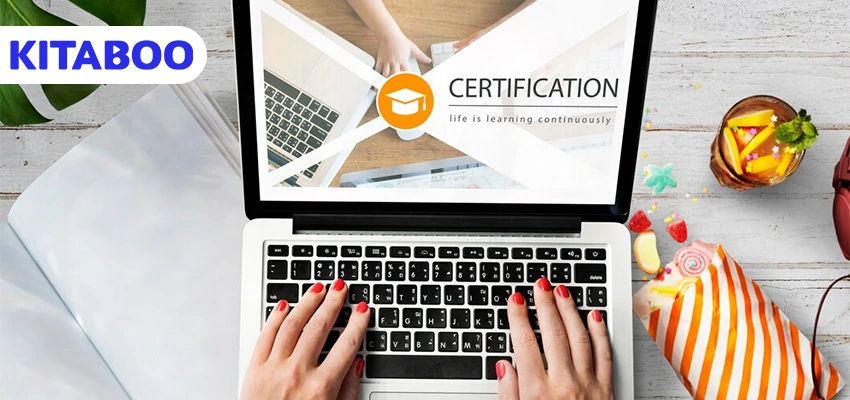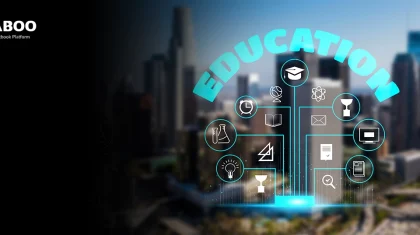
Revolutionize Your Certification Process: The Power of Interactive Content in Continual Education
Summarize this blog with your favorite AI:
A growing number of professionals today aspire to keep upskilling to stay relevant in the rapidly evolving world of work. A survey of 56,000 workers by PwC based across 50 countries and regions has revealed that 45% had higher workloads, 45% needed to learn new tools/ technologies to do their jobs, 40% had new daily responsibilities, and 35% had to change the way they collaborated at work.
Factors such as changes in technologies, customer preferences, government regulations, professional competition, and climate change demand that professionals invest in continual education at various junctures of their career graph.
Skilling institutions can satisfy these diverse demands by harnessing the power of interactive content in continual education. In this article, we outline nine strategies that can help institutions build engaging programs in a sustainable, cost-effective way.
Table of Contents:
I. What is Interactive Content in Continual Education?
II. 9 Building Blocks of Interactive Content in Continual Education
- Outline Key Learning Outcomes
- On-Demand Multi-Format Digital Library
- Mobile-First Experience
- Personalize Learning Paths
- Build Accessible Courses
- Strategic SEO
- Harness the Power of Learning Outcome Analytics
- Automate Content Publishing and Distribution
- Integrate Gamification
III. The Conclusion
What is Interactive Content in Continual Education?
Interactive content in continual education is a structured approach by which professionals can upskill and reskill in a highly effective, engaging, and sustainable way. Professional learners pursuing such credentials are looking to build skills, hone their knowledge, and continue to be relevant in the disruptive work environment.
For instance, software developers may aspire to learn new programming languages. Healthcare professionals may want to learn new techniques. Marketing professionals may want to leverage data more effectively to build successful campaigns.
Today, institutions looking to launch or upgrade existing professional courses can harness various techniques to build interactivity, flexibility, and data-centricity in their programs.
9 Strategies for Interactive Content in Continual Education
A combination of these strategies can help institutions offer relevant and engaging programs to their network of professionals:
1. Outline Key Learning Outcomes
Define the goals of the program, and how it can help professionals derive value through continual learning.
A good starting point is to conduct a survey among professionals in an institution’s network to help identify skills gaps, and market trends. Accordingly, they can invest in relevant training resources.
2. On-Demand Multi-Format Learning
Professionals learn faster through a mix of learning formats as per their preferences. Access to a digital library of on-demand resources in the form of videos, audio representations, slide shows, and white papers, offers learning flexibility to professionals.
Interactive eBooks are also growing in popularity, due to their ability to support formats such as 3D models and interactive widgets such as calculators. Continual learning must also have a clear industry focus. Integration of technologies such as Virtual Reality and Augmented Reality can help professionals build new skills in a live environment, minus the risks.
3. Mobile-first Experience
By 2025, the number of mobile devices, globally, is predicted to reach 18.22 billion.
With mobile phones becoming part and parcel of the professional’s life, they are more likely to learn faster from the comforts of this device. Hence, educational interactive content must be designed with a mobile first approach using digital platforms like KITABOO.
4. Personalize Learning Paths
AI-powered adaptive learning paths tailored to individual needs can make learning more relevant and flexible for professionals. Machine learning algorithms curate a series of lessons, practice sessions, and assessments, based on a learner’s real-time progress data.
This process enables professionals to expedite learning by absorbing and retaining knowledge faster. It also simplifies the lesson-setting process for institutions and reduces investments in physical instructors.
5. Build Accessible Courses
Learners, today, face diverse limitations.
For instance, professionals with disabilities, learning challenges, mobility issues, and language barriers, are held back due to a lack of an accessible learning ecosystem.
By introducing tools and aids, institutions can reduce barriers and build an equitable learning experience for all professionals. These include video captions and transcripts, multi-language subtitles, alt text for images and video elements, adjustable fonts and font size, and audio for all text.
6. Strategic SEO
Professionals must be able to find relevant content easily. Investments in a comprehensive Search Engine Optimisation (SEO) strategy can enable professionals to have an inverter learning experience.
For example, using relevant keywords, and effective backlinking, enables discoverability of content.
7. Harness the Power of Learning Outcome Analytics
AI-powered learning outcome data analytics has capabilities to forecast future trends, enabling institutions to curate programs with a data-driven approach. For instance, historical data of learners enables educators to predict their future performance.
They can accordingly, craft relevant interactive content for education and fill in the skill gaps, more effectively. Access to data can help boost overall learner engagement and performance in assessments.
Data-centricity paves the way for relevant curriculum design and delivery of courses that help professionals, both, individually and as a cohort. Digital textbook platforms like KITABOO enable data analytics giving an insightful approach to learning.
8. Automate Content Publishing and Distribution
By adopting the use of an AI-powered Learning Management System (LMS), institutions can automate the entire creation, publishing, and distribution of programs.
Usage of such a lot enables institutions:
- Create and upgrade courses quickly and efficiently.
- Deliver a single, unified learning experience program quickly.
- Onboard learners with ease.
- Personalize individual learning paths.
- Track performance.
- Leverage learning outcome data analytics to strengthen the impact of programs.
Digital textbook platforms like KITABOO offer institutions a comprehensive solution for effective and personalized learning experiences.
9. Harness Gamified Learning
The introduction of gamification elements helps make learning a highly interactive and aspirational journey. Examples of such elements include gamified challenges, rewards, and leaderboards.
A gamified experience gently nuggets professionals to engage in some healthy competition with other learners, collaborate and cultivate team skills, and stay motivated to learn in the face of slow outcomes.
The Conclusion
Contemporary professionals seek flexible, engaging learning experiences. Thus, upskilling programs need to evolve significantly to keep pace with these demands.
Educational institutions can rise up to the challenge and satisfy these demands by harnessing the power of interactive content in continued education. By adopting the use of superior AI-powered LMS, educators can stay agile in their skilling approach. They can upgrade programs quickly, thus enabling them to evolve alongside learner needs.
If your institution aims to craft and deliver high-impact, engaging programs, the use of superior publishing technology can help you accelerate this transition and growth.
Digital textbook publishing platform KITABOO helps educators harness the power of cutting-technology to automate the creation and delivery of high-quality programmes in continual education.
Connect with us now to start a conversation.
Also Check:
Discover how a mobile-first training platform can help your organization.
KITABOO is a cloud-based platform to create, deliver & track mobile-first interactive training content.



